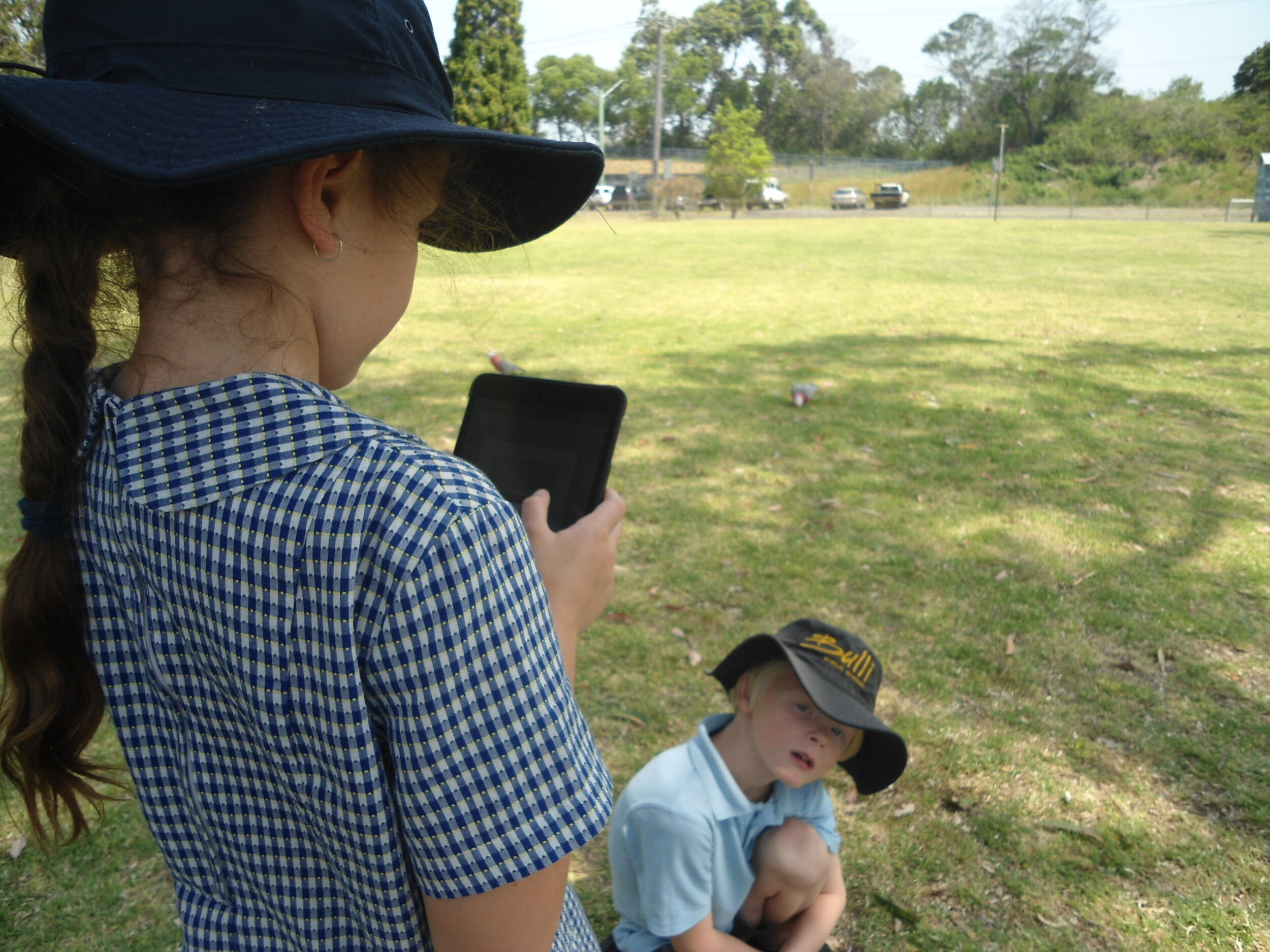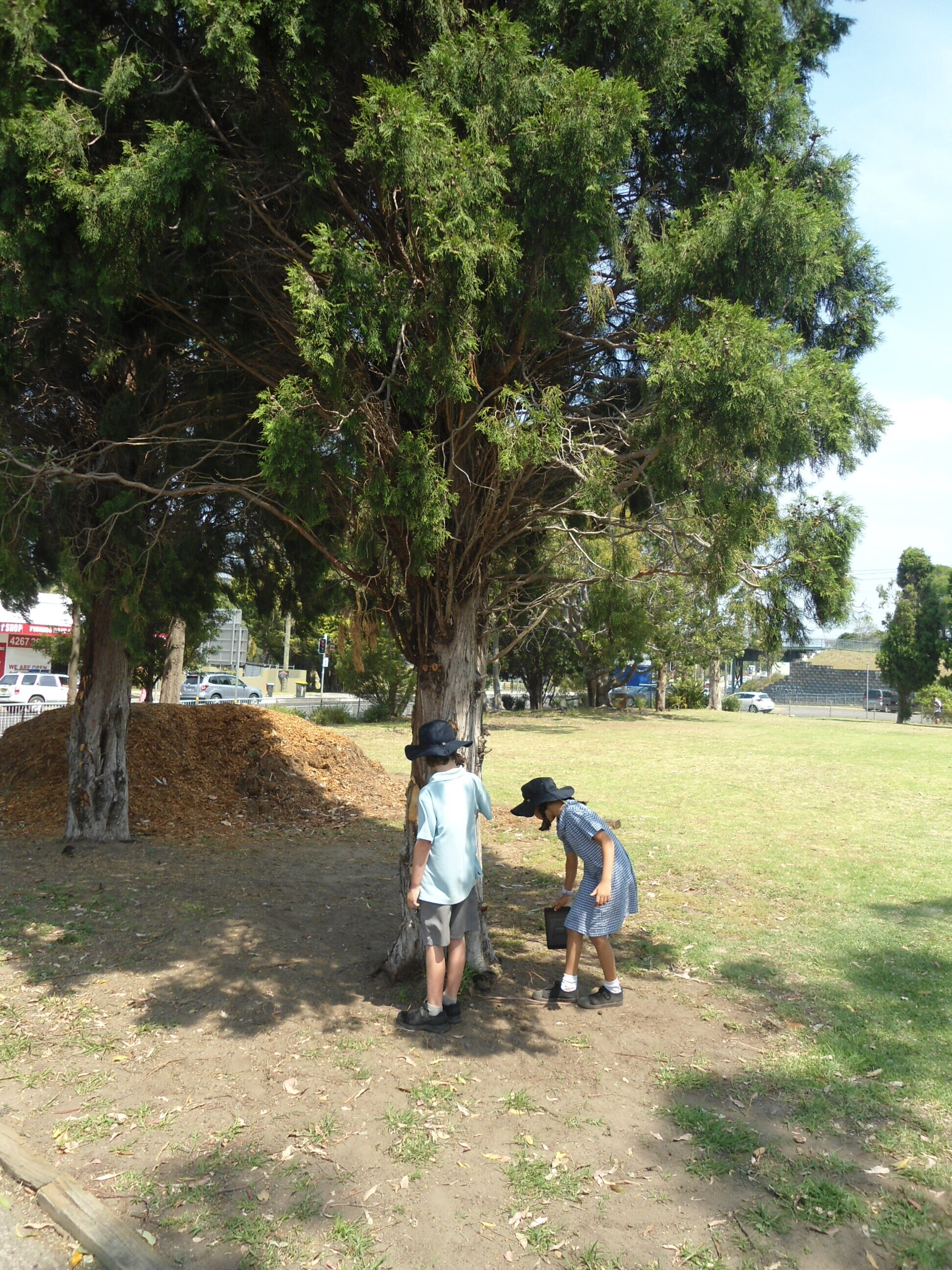Observing and recording the ambient sound landscape was an interesting task for my 2nd grade students, although at first there was a bit of a murmur about not being able to record. We tried to make short clips because listening to the sound samples made by others without a picture was quite difficult and boring for some children. They are not used to concentrating, imagining and thinking about what the sound looks like. The visual culture of today echoes the image of everywhere.
The weather conditions in Kokkola varied greatly in November. There were occasional frosty snow or new soft snow. Sometimes it rained by pouring water. The children wanted to record various forms of water outdoors. They observe squishy puddles, dripping eaves and icicles, crumbling ice, creaking snow, and finally, joyful throwing of snowballs. Some students wanted to capture the sound of the wind in their sound sample: how exciting the wind is tearing branches and banging doors.
The park behind our school is very quiet during the winter with calm weather. Birds have moved south. In bad weather there are just a few people out there, except for a few grandmothers who walk outside. It's different in summer.
To our surprise, nobody even tried to portray the darkness of the early winter in Finland as a boredom that eats all the color of the landscape on rainy days and almost paralyzes life (of adults). Children in cold, wet and dark do not seem to mind at all! They arrive cheerfully straight across the puddle and lower the butt as soon as there is even some ice. School drying cabinets have been buzzing for weeks as wet beanies, gloves, socks, pants and jackets are tried to be dry before the next break. Apparently only adults suffer from colic depression! And as soon as it rains a little new, white, and pure snow, the kids are out of joy.
The contrasts with the Australian summer, heat, drought and forest fires were highlighted. While listening to the soundscapes of Bull's schoolchildren, my students immediately paid attention to the birds and the sounds of nature. The fact that we just couldn't find out what the children were saying didn't bother. The cheerful summer atmosphere was transmitted to the other side of the globe and made the children imagine something unknown to themselves, position themselves in the position of another and travel to the warm ends of the world with their imagination. They said that in the summer we also have the hum of the trees and the birds singing.
Information should not be separated from art. That is why we have been studying Australian issues and following the news, for example. on the effects of forest fires on koalas and other animals. It has been a relief to hear Jeremy's messages that our twin school is not in danger. However, we heard that some students have a suitcase packed at home in case of a sudden fire start. It aroused debate and empathic feelings. Indeed, the students said that Bull School students could come to school and live with us if the smoke was hurting. Welcome without danger!
The culmination of media education culminated in the fact that the Finnish Broadcasting Company film group went on to talk about our DearYou project and reached out to Jeremy for a skype. Because of the time difference, we came to school half an hour before school (7.30am) and Jeremy's students waited for our call at five in the afternoon. The students were not too keen to listen to what Jeremy and his students were talking about because seeing the students live in real time was so exciting and wonderful.
In my experience, I told the news story that the three levels of art education have been accomplished brilliantly in this project:
- At the level of personal growth, the pupils are focused on picture making and expression. It has delved into itself and its own making, and the end result has not been the most important. There has only been an effort to increase the child's own identity.
- On the second level, the project has had social goals that aim to provide children with the skills they need in life. As examples, I mentioned growing empathy, accepting and understanding difference, and image reading.
- Third, we have a great cultural perspective. Art and image are about people and groups of people.
Thanks to Arlene and Jeremy for the great project and the Bull School students!
Kokkola on Finland's 102nd Independence Day
Auli and 2a from Mäntykangas School
6.12.2019
The 2nd graders from Mäntykankaan koulun in Kokkola, Finland are making and sharing art with the 1st and 2nd graders from Bulli Public School in Bulli, Australia.





















